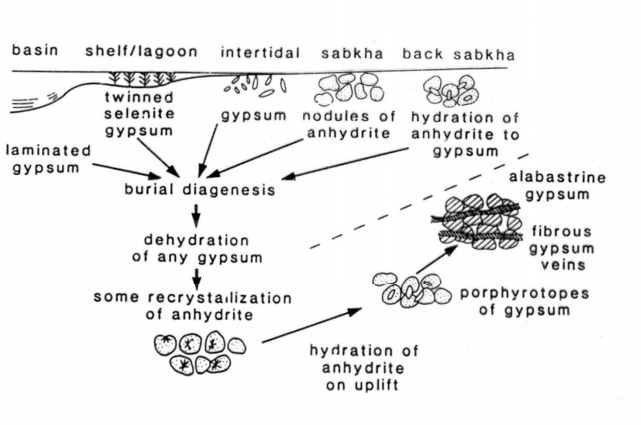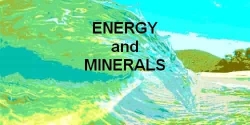Provenance of sedimentary rocks
Provenance of sedimentary rocks - some thoughts
source https://web.natur.cuni.cz/ugp/main/staff/martinek/Petro3/1-P3-SiliciclasticsEN.pdf ... also Carbonates I, Carbonates II, EvaporitesMorton, A. C., Todd, S. P. & Haughton, P. D. W. (eds), 1991, Developments in Sedimentary Provenance Studies. Geological Society Special Publication No. 57, pp. 1-11.
Geochemical Provenance of Clastic Sedimentary Rocks in the Western Cordillera: Utah, Colorado, Wyoming, and Oregon By John Aaron Peterson, Master of Science Utah State University, 2009
https://en.wikipedia.org/wiki/Heavy_mineral_sands_ore_deposits
Provenance
Analysis by Modal Composition of Sediments
Cratons and
Margins
Sediments
resulting from Continental vs. Magmatic Arc vs. Recycled Orogen
Sediments
resulting from Geotectonic Position
Sediments
resulting from Humid vs. Arid Climate
Sediments
resulting from Different Basalts based on proportions of Titanium /
Manganse / Sodium Oxides
Provenance
based on Accessory Minerals
The
seven most "long lived" heavy minerals
Relative
stability of some heavy minerals
Provenance
using Heavy Mineral associations
Affect of
Burial Depth on composition
Different
Models of Dolomitisation may yield diagnostic features related to
climate
Patterns
in Evaporite Sediments may yield information as to origins
Mineralogical
Associations in Evaporite Sediments may yield information as to
origins

The process of determining the provenance / origin of sedimentary rocks can be very useful in terms of economic geology and in determining the sequence of geological events.
For example it may be of value to be able to state that a sandstone was derived from a particular type of granite known for its porphyry copper potential or alternatively that a sediment of interest has been metamorphosed and melted to form the igneous rock you are interested in.
Sedimentary rocks are an important source of information about previous orogenic conditions and the composition of which may describe the evolution of provenance and tectonic setting. As the sediment composition changes through time, the geochemical characteristics of the sediment can be used to understand its geologic history.
The study of sedimentary provenance interfaces several of the mainstream geological disciplines (mineralogy, geochemistry, geochronology, sedimentology, igneous and metamorphic petrology). Its remit includes the location and nature of sediment source areas, the pathways by which sediment is transferred from source to basin of deposition, and the factors that influence the composition of sedimentary rocks (e.g. relief, climate, tectonic setting).
However, the process of determining provenance is quite difficult and beyond the scope of this site's intended audience.
This page takes a brief non-academic look at a few ways to approach the topic... with no attempt to do in depth analysis...
Provenance Analysis by Modal Composition of Sediments
Cratons and Margins
Q=quartz F= feldspar RF=Rock Fragments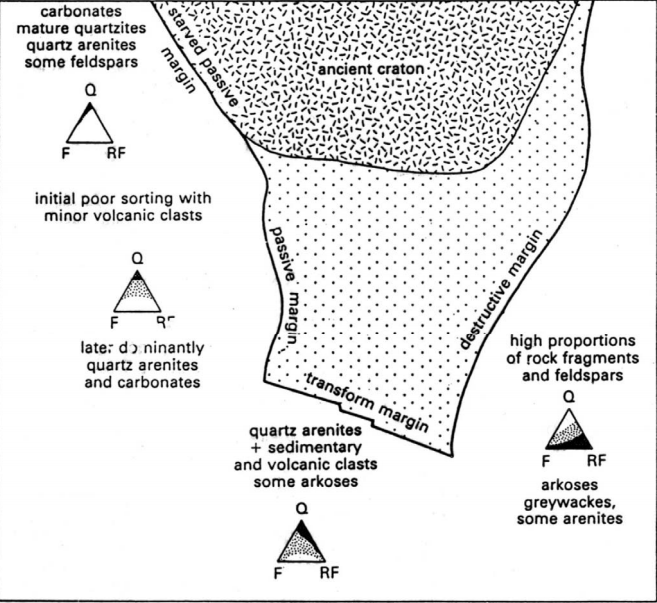
So a starved passive margin results in initial sediments rich in carbonates / mature quartzites / quartz arenites / some feldspars and is rock fragment poor.
While a destructive margin results in inital sediments with high proportions of rock fragments mainly arkoses / greywackes / some arenites
Sediments resulting from Continental vs. Magmatic Arc vs. Recycled Orogen
Qt=total quartz F=feldspar L= lithic fragments Qm=monocrystalline quartz Lt=total lithic component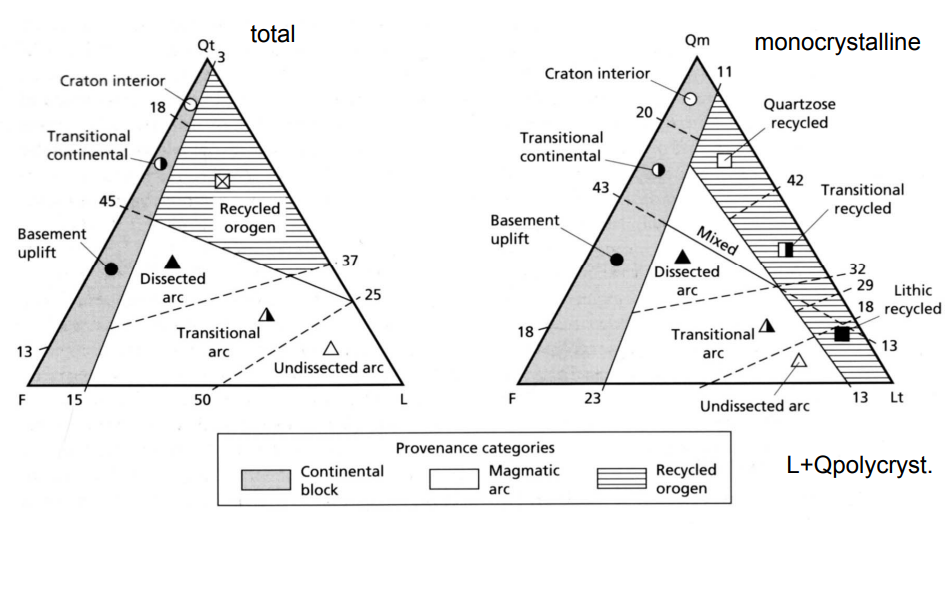
So a continental block results in initial sediments rich in quartz and feldspar.
While a dissected magmatic arc results in an initial sediment with similar proportions of monocrystalline quartz / feldspar / lithic components
Sediments resulting from Geotectonic Position
Q=quatrz F=feldspar L=lithic component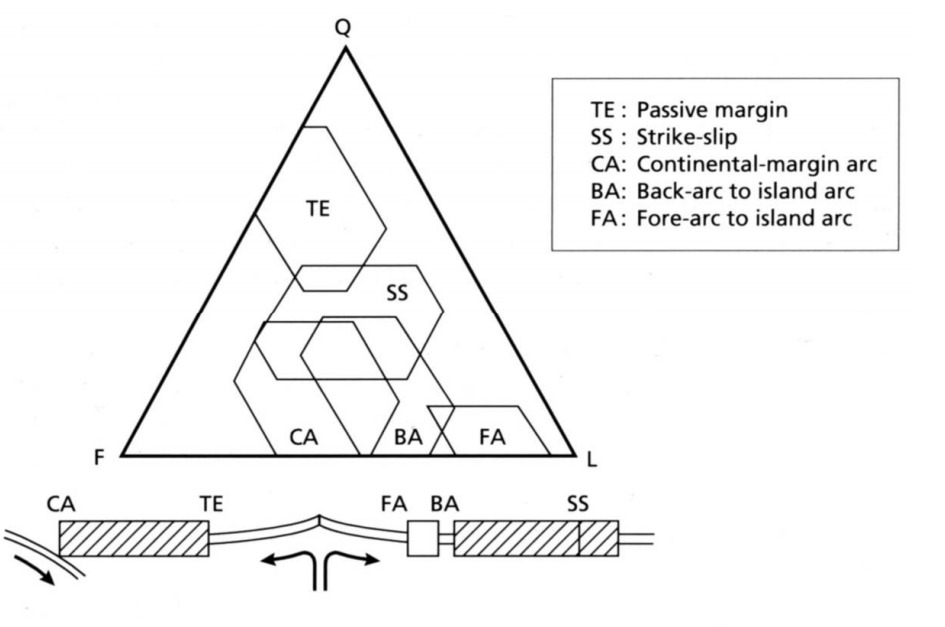
Sediments resulting from Humid vs. Arid Climate
Q=quatrz F=feldspar L=lithic component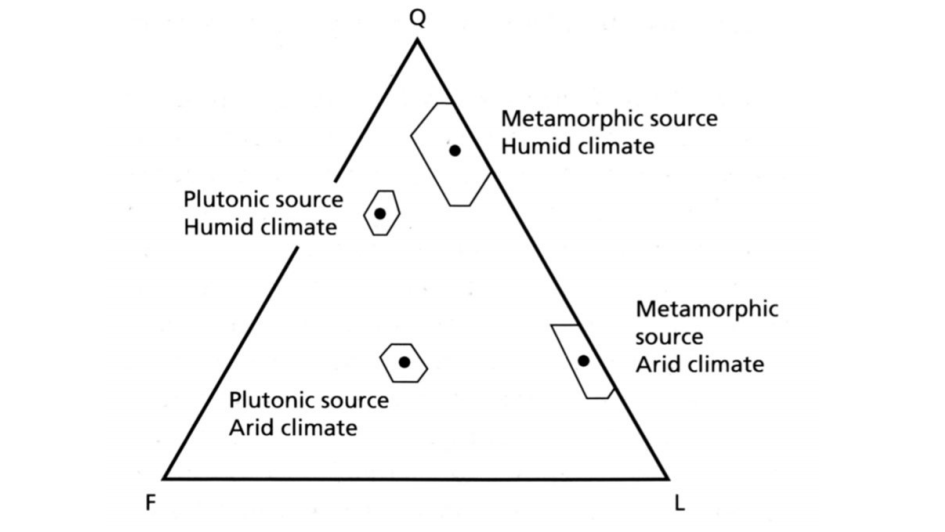
Sediments resulting from Different Basalts based on proportions of Titanium / Manganse / Sodium Oxides
TiO2 = titanium oxide MnO= manganese oxide Na2O = sodium oxide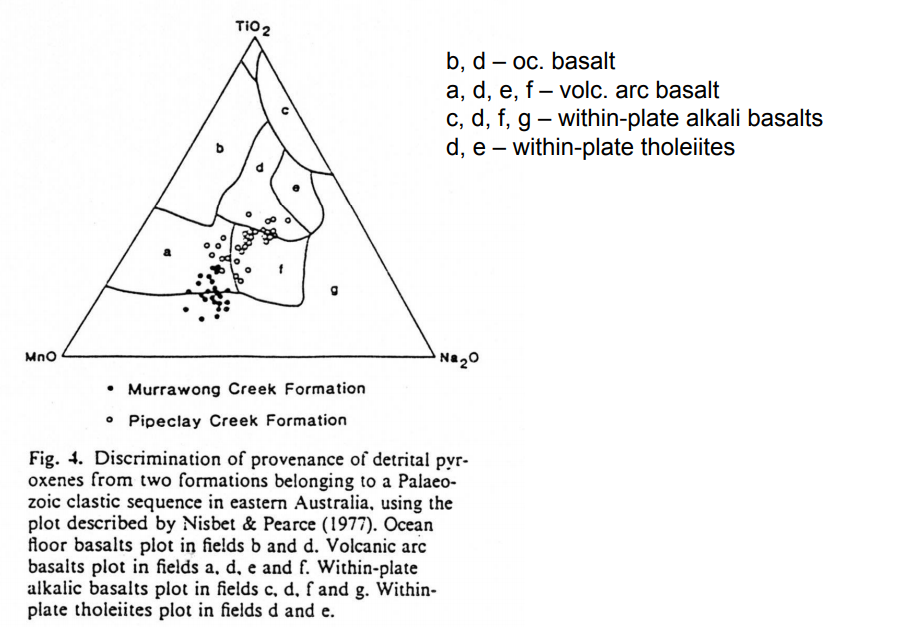
Provenance based on Accessory Minerals
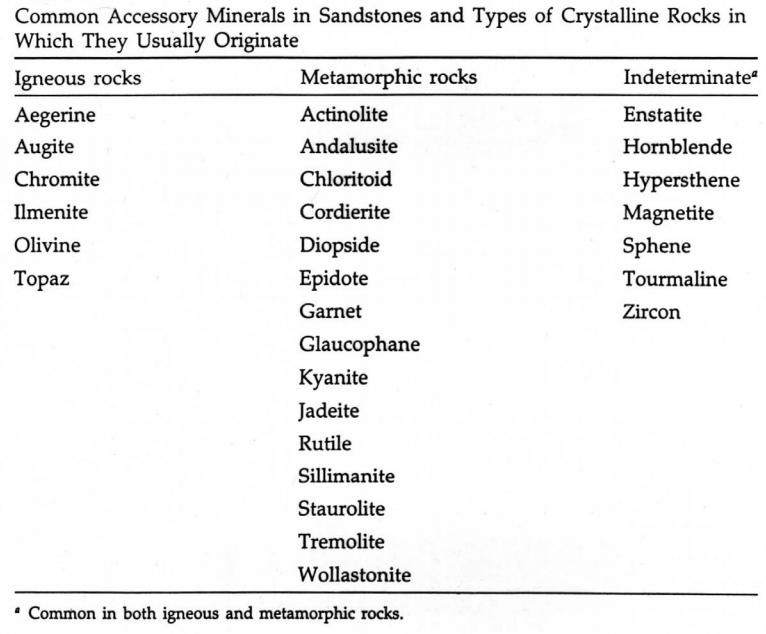
The source of zircon, monazite, rutile, sometimes tungsten, and some ilmenite is usually granite.
The source of ilmenite, garnet, sapphire and diamond is ultramafic and mafic rocks, such as kimberlite or basalt.
Garnet is also sourced commonly from metamorphic rocks, such as amphibolite schists.
Precious metals are sourced from ore deposits hosted within metamorphic rocks.
The seven most "long lived" heavy minerals
These minerals are very durable and can survive the transition from rock to sediment to rock againsee also Xenoliths / Xenocrysts and their uses...
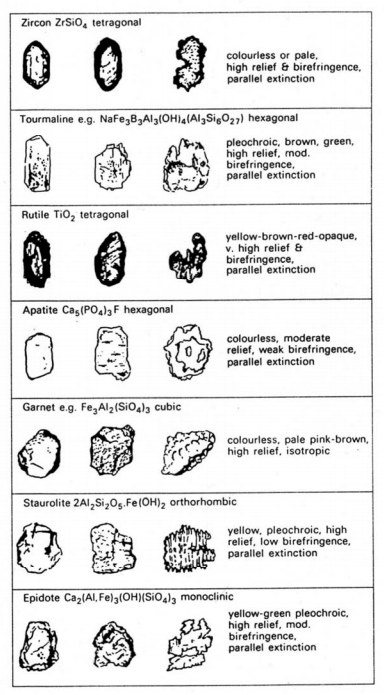
Relative stability of some heavy minerals

Provenance using Heavy Mineral associations
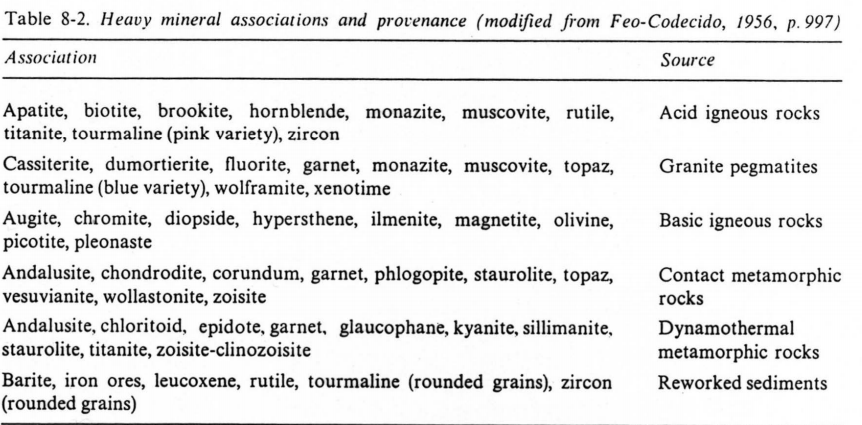
Affect of Burial Depth on composition
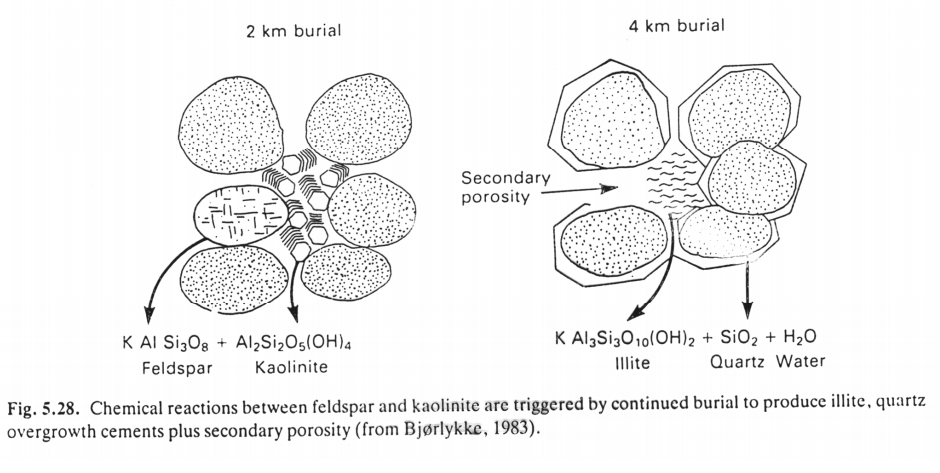
Different Models of Dolomitisation may yield diagnostic features related to climate
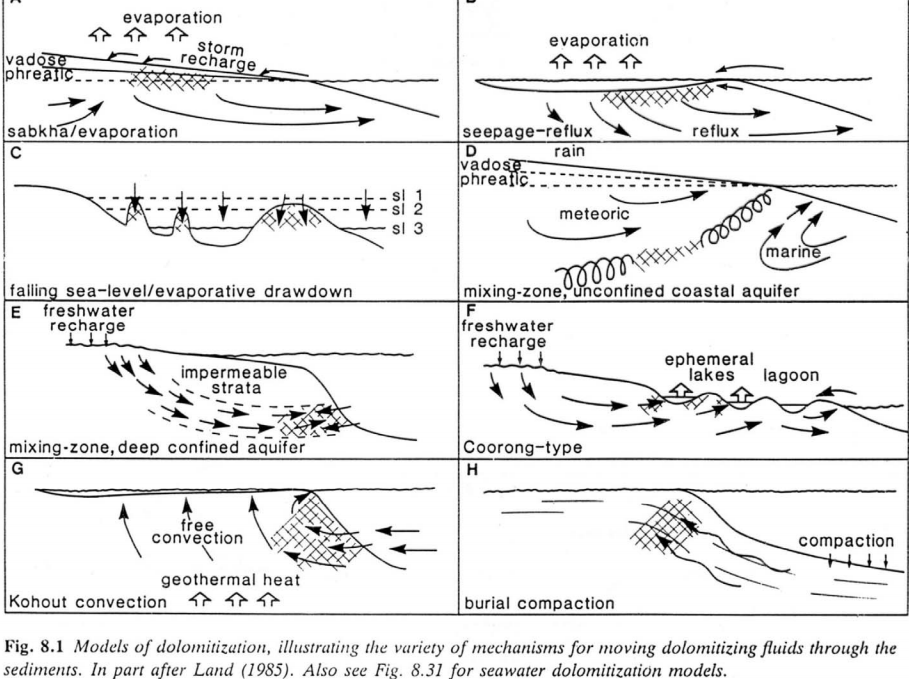
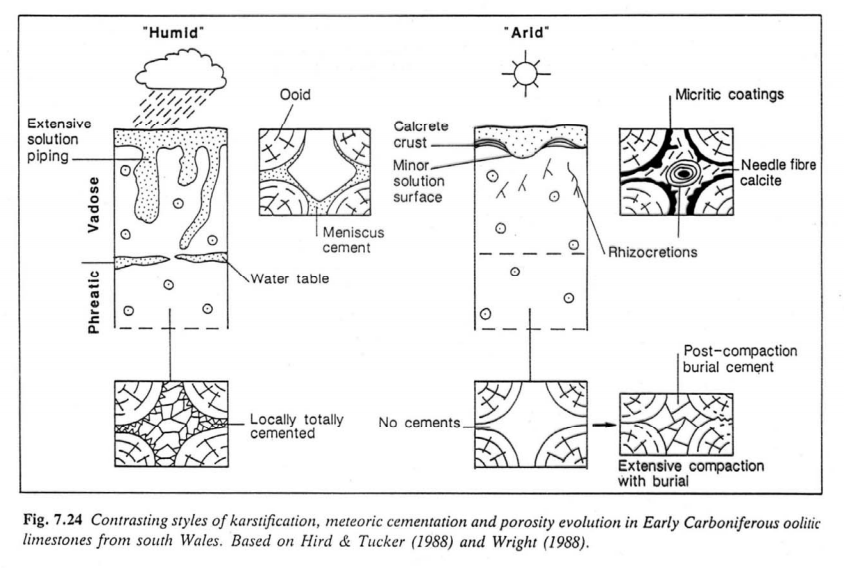
Patterns in Evaporite Sediments may yield information as to origins
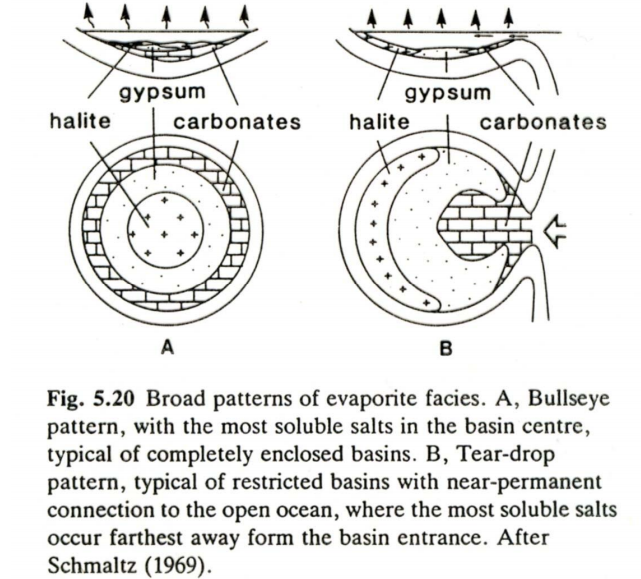
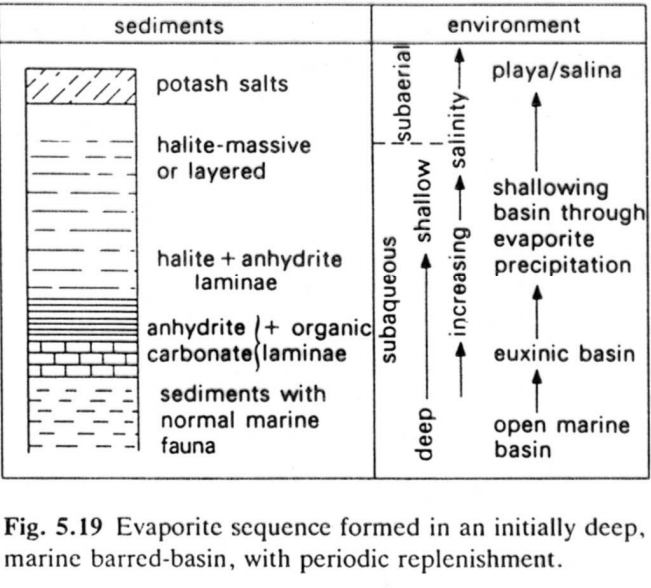
Mineralogical Associations in Evaporite Sediments may yield information as to origins
